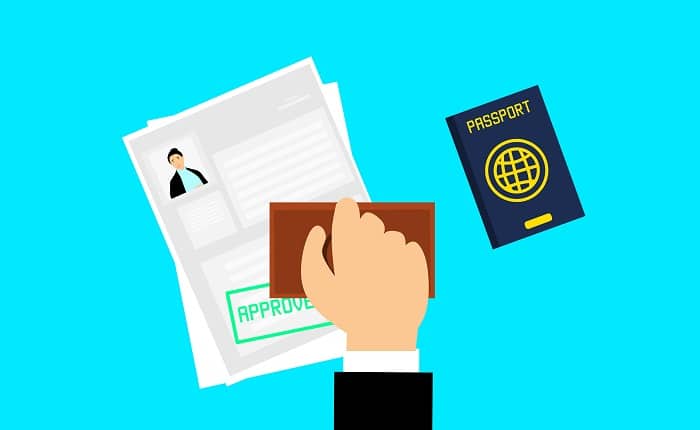How Technology Can Modernizing The Immigration Process

TechsPlace | Every year, millions of immigration requests are processed. The immigration process is paper-based, it consists of several forms and long waiting time. The application costs hundreds of dollars, and processing takes up to six months.
The applicant visits the service center to cross reference the application. The paperwork piles up with time and goes to an adjudicator. This federal employer reviews the application and gives his verdict. The whole process can take 3 to 12 months.
This is unacceptable, and we need to make some improvements.
How Can Tech Help?
The slow processing has been an issue for decades. Today, we have the technology and means to facilitate the processing. The issue is, many countries had tried before the digitizing their immigration process (some were successful), but many had too many issues.
In some cases, the scope of such projects was too large, or the timeline was too long. But the common issue was, these systems fell short of our expectations.
Advanced Technical-Base paired with User-Centered Design
After years of research, the conclusion is a modern technical base combined with a user-friendly. This design can help modernize the immigration process. It gives an agile approach with open source parts, which makes it easy to maintain. This can help facilitate the immigration if we manage to do the following:
1. Move the Application to a Public Cloud
Doing this will cut off the infrastructure costs. It will improve the reliability and up-time of the application.
2. Use Application Monitoring
If we successful use application monitoring, with instant notification. It can help to respond quickly to present issue. This will improve the visibility of key metrics. With this improvement, you will have the key statistics even before the executive receives their reports. You will get updates on your dashboard in real-time.
3. Facilitate the Process and Meet Deadlines:
If we make the immigration form digital, it will facilitate the whole process. Officers will have an easier time collecting feedback and other important data to process. Some countries have adopted electronic filing.
Doing so will increase the overall volume and eliminates the room for error. Just make sure you update the software.
4. Re-imagining the Whole Immigration Process
We need to develop a platform that provides easy access to the immigration process. It should show people which immigration process they can qualify for like permanent, work permit, spouse, etc. This will be a major paradigm shift to facilitate everyone involved in the immigration process.
It can easily become the primary tool for the immigration process and will make users the center of their work.
However, modernizing immigration process is much more than adopting new technology. It mends the bridge between dreams and reality. Every country should improve their immigration process to facilitate people migrating in search of a better life.
These immigrants contribute to the economy and society. Therefore, the immigration department should keep workers and applicants at heart to fix their issues and smoother the whole process. It’s the need of this hour!
5. Understand User Needs and Change Accordingly
At this time, it’s imperative we discover the needs of people, and how we can assist them. The government uses its processes. We need to change the current system from inside out to meet current and future demands.
People are overwhelmed by several agencies processing their application. The government needs to cut the confusion and streamline the process. It will help fight redundancy.
It’s imperative we make the system clear and simple. It will help people understand the process and prepare for it.
6. Language and Design Patterns
Consistent Design patterns help the user become family with the services being offered. The applicant doesn’t need to submit their form to multiple players. This doesn’t promote any sense of security.
It is the government’s responsibility to create a single body that handles all these aspects. Creating a single body will not only streamline the process for applicants but also cut the infrastructure costs. It is a win-win situation for everyone.
While doing that, the government should also make sure the immigration information is easy to access. This will help people to prepare themselves when submitting the paperwork.
How Technology Can Modernizing the Immigration Process
Every year, millions of immigration requests are processed. The immigration process is paper-based, it consists of several forms and long waiting time. The application costs hundreds of dollars, and processing takes up to six months.
The applicant visits the service center to cross reference the application. The paperwork piles up with time and goes to an adjudicator. This federal employer reviews the application and gives his verdict. The whole process can take 3 to 12 months.
This is unacceptable, and we need to make some improvements.
How Can Tech Help?
The slow processing has been an issue for decades. Today, we have the technology and means to facilitate the processing. The issue is, many countries had tried before the digitizing their immigration process (some were successful), but many had too many issues.
In some cases, the scope of such projects was too large, or the timeline was too long. But the common issue was, these systems fell short of our expectations.
Advanced Technical-Base paired with User-Centered Design
After years of research, the conclusion is a modern technical base combined with a user-friendly. This design can help modernize the immigration process. It gives an agile approach with open source parts, which makes it easy to maintain. This can help facilitate the immigration if we manage to do the following:
1. Move the Application to a Public Cloud
Doing this will cut off the infrastructure costs. It will improve the reliability and uptime of the application.
2. Use Application Monitoring
If we successful use application monitoring, with instant notification. It can help to respond quickly to present issue. This will improve the visibility of key metrics. With this improvement, you will have the key statistics even before the executive receives their reports. You will get updates on your dashboard in real-time.
3. Facilitate the Process and Meet Deadlines:
If we make the immigration form digital, it will facilitate the whole process. Officers will have an easier time collecting feedback and other important data to process. Some countries have adopted electronic filing.
Doing so will increase the overall volume and eliminates the room for error. Just make sure you update the software.
4. Re-imagining the Whole Immigration Process
We need to develop a platform that provides easy access to the immigration process. It should show people which immigration process they can qualify for like permanent, work permit, spouse, etc. This will be a major paradigm shift to facilitate everyone involved in the immigration process.
It can easily become the primary tool for the immigration process and will make users the center of their work.
However, modernizing immigration process is much more than adopting new technology. It mends the bridge between dreams and reality. Every country should improve their immigration process to facilitate people migrating in search of a better life.
These immigrants contribute to the economy and society. Therefore, the immigration department should keep workers and applicants at heart to fix their issues and smoothen the whole process. It’s the need of this hour!
5. Understand User Needs and Change Accordingly
At this time, it’s imperative we discover the needs of people, and how we can assist them. The government uses its processes. We need to change the current system from inside out to meet current and future demands.
People are overwhelmed by several agencies processing their application. The government needs to cut the confusion and streamline the process. It will help fight redundancy.
It’s imperative we make the system clear and simple. It will help people understand the process and prepare for it.
6. Language and Design Patterns
Consistent Design patterns help the user become family with the services being offered. The applicant doesn’t need to submit their form to multiple players. This doesn’t promote any sense of security.
It is the government’s responsibility to create a single body that handles all these aspects. Creating a single body will not only streamline the process for applicants but also cut the infrastructure costs. It is a win-win situation for everyone.
While doing that, the government should also make sure the immigration information is easy to access. This will help people to prepare themselves when submitting the paperwork.
This article is contributed by guest author on techsplace.com.





